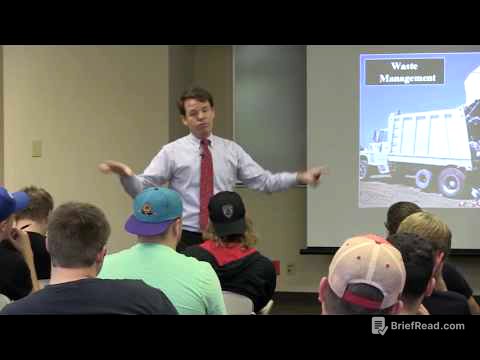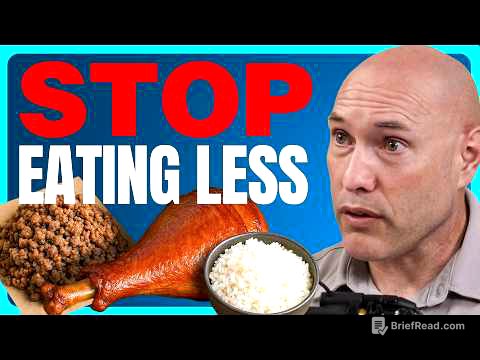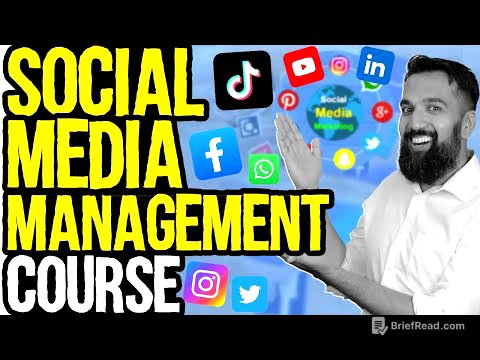TLDR;
This video by Sprouts explains burnout as a reaction to prolonged stress, detailing its progression through five stages: the honeymoon phase, the onset of stress, chronic stress, apathy, and habitual burnout. It emphasizes that burnout isn't solely work-related and can affect various individuals. The video also touches on recognizing early symptoms and seeking recovery, highlighting the importance of self-care and distancing from stressors.
- Burnout is a reaction to prolonged stress, not just from work.
- It progresses through five stages: honeymoon, stress onset, chronic stress, apathy, and habitual burnout.
- Early recognition of symptoms is crucial for recovery.
Introduction [0:16]
Burnout is described as a reaction to prolonged stress, leading to mental fatigue, emotional apathy, and physical exhaustion. It's not limited to work-related situations and can affect anyone facing excessive pressure. The phenomenon typically unfolds in five stages and can push individuals such as healthcare professionals, teachers, new parents, and those with chronic conditions to their breaking point.
Burnout explains [0:29]
The initial stage, known as the honeymoon phase, is characterized by happiness, motivation, and excitement towards new challenges, leading individuals to take on numerous responsibilities. As the initial enthusiasm wanes, the realities of the daily routine set in, marking the onset of stress. Feelings of tiredness and anxiety emerge due to the inability to manage the workload.
5 stages of burnout [0:43]
Signs of stress begin to manifest, leading to negative tunnel vision and a limited capacity to focus on other aspects of life, potentially causing feelings of loneliness. Chronic stress becomes a constant presence, where even minor tasks can trigger anxiety or rage. Life may seem unfair, and setbacks can be perceived as personal attacks or injustices.
The honeymoon phase [0:59]
The honeymoon phase is characterized by happiness, motivation, and excitement towards new challenges, leading individuals to take on numerous responsibilities.
Stress set in [1:09]
As the initial enthusiasm wanes, the realities of the daily routine set in, marking the onset of stress. Feelings of tiredness and anxiety emerge due to the inability to manage the workload.
Chronic stress [1:34]
The individual experiences exhaustion and may develop psychosomatic symptoms like migraines or body aches. During free time, there's a desire to shut down and withdraw.
Apathy takes over [2:01]
Apathy takes over as a defense mechanism against chronic stress, causing the brain to stop caring. This leads to a decline in productivity and the development of negative or cynical attitudes. Chronic headaches, insomnia, neglect of personal needs, and the desire to disengage become routine.
Habitual burnout [2:24]
The stressful state becomes the new normal, leading to constant cognitive fatigue, physical problems, and mood swings between apathy and anger. Individuals may feel trapped in a cycle of despair with no escape. A diagnosis of major depression can serve as the initial step toward recovery.
Path to recovery [2:49]
Full recovery from burnout can take months or even years, emphasizing the importance of early symptom recognition. This allows individuals to distance themselves from stressors, create personal time for relaxation, and take necessary actions before it's too late.
Freudenberger’s definition [3:07]
The psychologist Herbert Freudenberger, who coined the term "burnout," initially described it as unfolding in 12 stages, which were later simplified to five. He defined burnout as "fatigue that comes from caring too much, for too long."
What about you? [3:25]
The video prompts viewers to reflect on their experiences with burnout, encouraging them to share their recognition methods and coping strategies in the comments section.
Sprouts book post promo [3:46]
Sprouts promotes "The Unschoolers Educational Dictionary," a book covering their decade-long research on education, the consequences of compulsory education, and a guide to the alternative school movement. Viewers are encouraged to purchase the book from their favorite bookstore or through the links provided in the description.
Ending [4:18]
Viewers are encouraged to explore other videos, join Sprouts on YouTube, or support them on Patreon. Additional resources, classroom exercises, and videos without background music are available on sproutsschools.com. The content is published under Creative Commons.
![The 5 Stages of Burnout [How To Recognize Them]](https://wm-img.halpindev.com/p-briefread_c-10_b-10/urlb/aHR0cDovL2ltZy55b3V0dWJlLmNvbS92aS9ubndrWDZ1OXRGby9tYXhyZXNkZWZhdWx0LmpwZw==.jpg)








